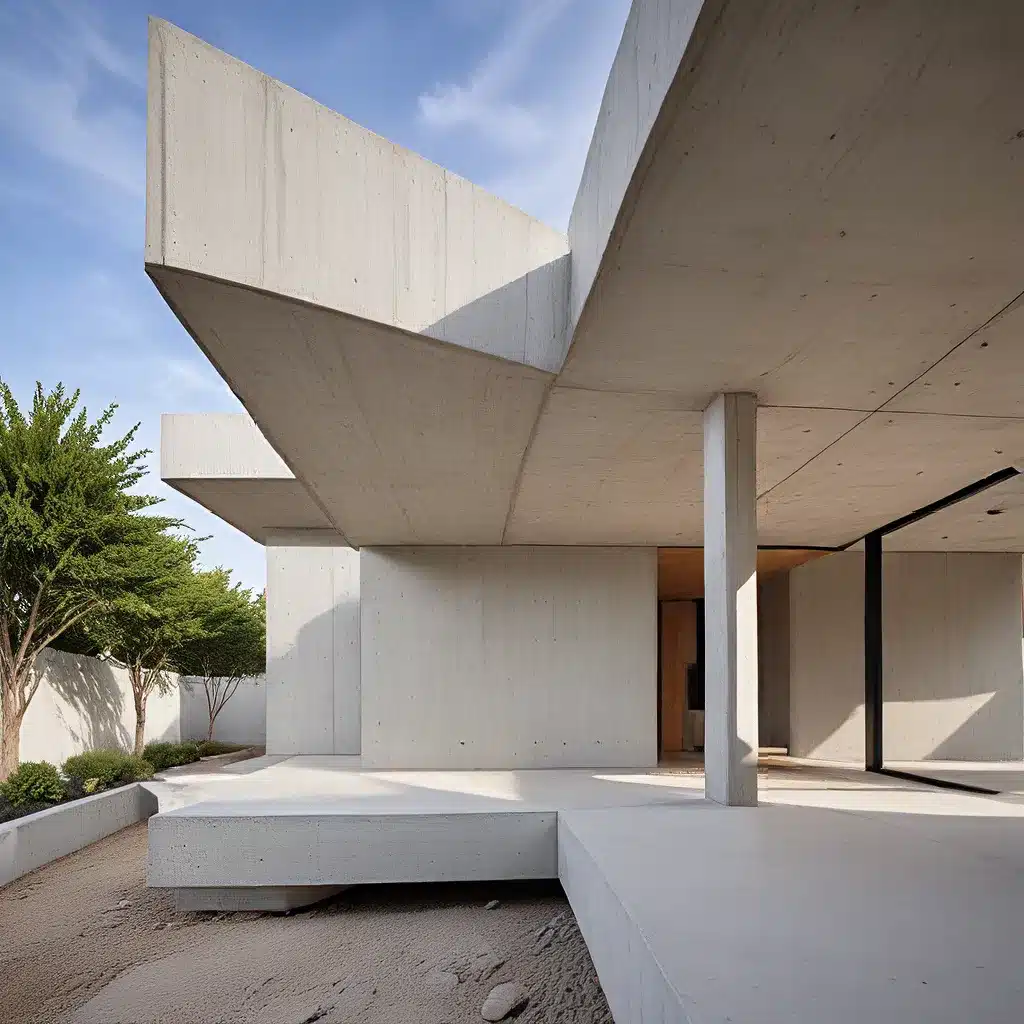
The Humble Origins of Concrete
Ah, concrete – that unassuming yet steadfast backbone of modern infrastructure. Its origins trace back to a simple blend of cement, air, water, sand, and gravel. An unpretentious mixture, one might say. But hold on to your hard hats, my friends, because this seemingly absolute material is about to undergo a metamorphosis that will shatter preconceived notions and redefine the boundaries of traditional construction.
You see, in this relentless quest to refine and revolutionize the building landscape, scientists and engineers are exploring unique concrete compositions that push the limits of what we thought possible. It’s like watching a caterpillar transform into a dazzling butterfly, except in this case, the transformation is from a symbol of steadfastness to a beacon of progress and sustainability.
Unveiling the Potential of Ultra High-Performance Concrete
One of the most promising frontiers in concrete technology is the development of Ultra High-Performance Concrete (UHPC). This exemplification of scientific and technological advancements introduces a new paradigm in the realm of concrete compositions. Unlike traditional concrete, UHPC departs from the customary 10-20-30-40 rule, boasting a higher cement content complemented by a meticulous selection of fine raw materials.
It’s this enhanced blend that imparts UHPC with its exceptional qualities, rendering it a cut above its conventional counterparts. UHPC’s intrinsic properties translate into an elevated tensile and compressive strength, unparalleled durability, and longevity that greatly surpass those of traditional concrete. Its excellent performance and resistance to environmental factors like frost and chemical attacks make it the preferred choice for critical infrastructure projects, including bridges and high-rise buildings.
Imagine a concrete so strong and resilient that it can support towering skyscrapers and withstand the ravages of time and weather. That’s the power of UHPC, a testament to the remarkable advancements in concrete technology.
Photocatalytic Concrete: Clearing the Air
In an era increasingly conscious of environmental sustainability, the realm of photocatalytic concrete has emerged as a beacon of hope. This groundbreaking form of concrete presents a novel way of mitigating pollution while fulfilling the conventional roles of a building material.
Photocatalytic concrete capitalizes on the interaction of sunlight with its surface to initiate chemical reactions. These reactions effectively decompose a wide array of pollutants present in the surrounding air, resulting in a cleaner and healthier environment. The concrete surface, when exposed to sunlight, effectively becomes a large-scale self-cleaning air purifier.
Imagine a bustling city street lined with buildings made of this innovative concrete composition. As the sun’s rays bounce off the surfaces, they unleash a chemical reaction that breaks down the harmful pollutants, leaving the air fresher and more breathable. It’s like a giant, invisible vacuum cleaner, quietly and efficiently cleaning the air we breathe.
Eco-Friendly Concrete: Reducing the Carbon Footprint
Amid growing environmental concerns and sustainability goals, there is a critical need to address the carbon footprint associated with traditional concrete manufacturing processes. In response, several eco-friendly concrete compositions have emerged, aiming to substantially reduce environmental impact while preserving performance standards.
One such remarkable solution is the incorporation of industrial byproducts into concrete compositions. Fly ash, a residue from coal-fired power plants, and blast furnace slag, a byproduct of iron production, are valuable supplements that can replace a portion of the cement in concrete. These substitutions not only reduce CO2 emissions but also utilize materials that would otherwise end up in landfills.
But the innovation doesn’t stop there. Carbon-capturing concrete is another game-changer gaining traction. These novel concrete compositions absorb atmospheric CO2 during the curing process, locking it within the concrete matrix and aiding in the fight against climate change.
It’s as if the concrete itself has become an environmental warrior, actively working to offset the carbon footprint of the construction industry. A true testament to the power of innovation and the unwavering determination to create a more sustainable future.
Translucent Concrete: Shattering the Boundaries of Light and Structure
Translucent concrete, also known as light-transmitting concrete, heralds a new era in architectural aesthetics. This unique concrete composition merges structural robustness with the ability to transmit light, promising an enthralling interplay of shadows and illumination.
The secret to translucent concrete lies in its composition. Traditional aggregate materials are interspersed with optical fibers that transmit light between the two sides of a concrete element. Despite their small size, these fibers fill up to 4% of the concrete volume, allowing light and even muted shadows to pass through.
Imagine a load-bearing wall that also allows diffused sunlight to fill the room, or a concrete pavement that lights up with internal illumination. This avant-garde material isn’t just about aesthetics; it also presents opportunities for energy conservation, reducing the need for artificial lighting and harnessing the power of natural light.
Beyond the Boundaries: Innovative Concrete Compositions
As we delve deeper into the world of unique concrete compositions, it’s clear that the future holds exciting and game-changing potential. The boundaries of what we can achieve are expanding, and it is this dynamic process that fuels the exciting evolution of concrete compositions.
From bio-concrete with self-healing abilities to translucent concrete that lets in natural light, concrete is all set to break the mold and redefine its role in modern construction. Imagine a building that can repair its own cracks or a pavement that glows with an ethereal beauty – these are no longer mere fantasies, but tangible realities that are shaping the construction landscape of tomorrow.
At Concrete RT Townsville, we are at the forefront of this exciting metamorphosis. Our team of innovative engineers and material scientists are dedicated to exploring the boundaries of traditional concrete, pushing the limits of what’s possible and creating solutions that revolutionize the way we build.
So, as you walk the streets or admire the towering structures around you, remember that beneath the surface, a revolution is taking place. Concrete, once the symbol of steadfastness, is now a beacon of progress, leading us into a future where the boundaries of construction are redefined, one innovative composition at a time.

